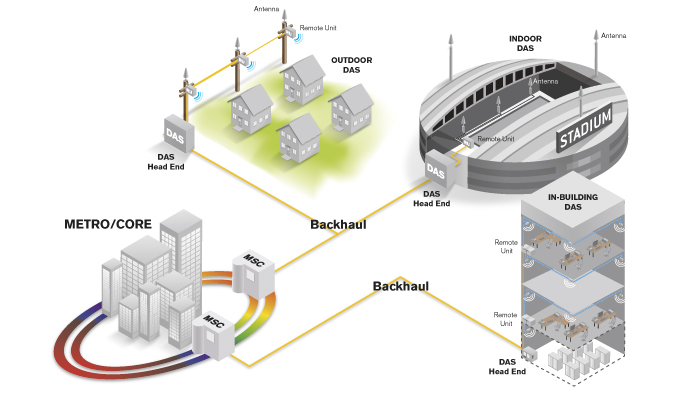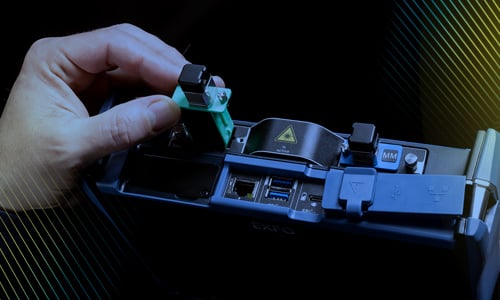What you may not know about distributed antenna systems
A distributed antenna system (DAS) is a network of spatially separated antenna nodes connected to a common source via a transport medium that provides wireless service within a geographic area or structure. Essentially, the best way to feed bandwidth to the entire wireless infrastructure is to increase fiber connectivity and penetration.
Today’s vast landscape of high-rise buildings and municipal water towers is now the home to core macrocellular network installations (such as cell towers and antennas) that allow wireless service providers (WSPs) to deliver voice, text and broadband communications over large coverage areas.
Back in the stone age of cellular phones, when voice communication was the only offering, network design focused on coverage rather than capacity. But today’s phones have morphed into portable, application-oriented, Internet-enabled computers that greatly increase the strain on network capacity. Bandwidth demand is on the rise as smartphones and tablets are now HD video and media enabled, but coverage radius is decreasing. And, in terms of expanding coverage, adding new macro sites, microcells and picocells simply won’t cut it. A better way to augment the macro layer is by adding low-power nodes like femtocells, remote radio heads (RRHs), remote radio units (RRUs) and DAS. This enhanced macrocellular network is called a heterogeneous network, or HetNet.
Many key physical parameters impact DAS performance and cost, including dirty or damaged connectors, bad splices or macrobends. The purpose of any fiber-optic network is to perform high-speed, error-free data transmission. Adequate testing during each phase of the network deployment guarantees that products meet specifications, while minimizing costly and time-consuming troubleshooting efforts (e.g., locating bad connectors, questionable splices and other faulty components) before they disrupt service.
One of the most important factors in ensuring proper transmission is controlling power loss in the network against the link loss-budget specifications from the network design recommendation. This is carried out by establishing a total end-to-end loss budget with sufficient margin while reducing back reflection to a minimum. This is particularly important for analog RF video signals from extremely narrowband lasers, because strong back reflections degrade the quality of the signal transmission.
For the full story, check out EXFO’s recently released Distributed Antenna System Testing Guide. This informative guide sheds light on the growing importance of DAS, and the challenges arising from increased traffic in the wireless space. It also covers the function and role of antennas, fiber-optic infrastructure requirements and, most importantly, best testing practices. Inside, you’ll also find information about wireline challenges related to small cells, RRH, DAS, DAS vs. RRH, and fiber to the cell site. Last but not least, the guide provides a comprehensive overview about the process involved in troubleshooting live systems, from fiber troubleshooting to the tools used to perform troubleshooting.




